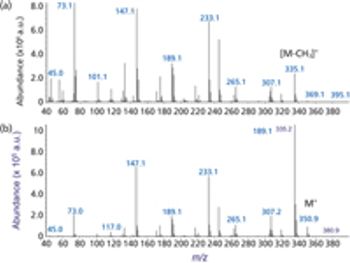Articles by Kikuo Sasamoto

This review discusses recent technological advances in classical heart-cuttting two-dimensional gas chromatography (GC–GC). These developments are then illustrated by application to analysis of important flavour compounds at trace levels in very complex matrices

The application of gas chromatography (GC) combined with atmospheric pressure chemical ionization mass spectrometry (GC–APCI-MS) and with supersonic molecular beam ionization mass spectrometry (GC–SMB-MS).

Soft ionization MS using GC–APCI-MS and GC–SMB-MS offers complementary identification power for the characterization of natural products, as illustrated by the identification of alkanes, sterols, long chain alcohols, and derivatized polar compounds in tobacco leaf extracts described here.

Gas chromatography and comprehensive two-dimensional gas chromatography with time-of-flight mass spectrometry (GC–TOFMS and GCxGC–TOFMS) were utilized to develop trace-level calibration curves in brewed green tea spiked with organochlorine and organophosphorus pesticide standards. A sensitive and robust calibration curve was developed from 10 to 500 parts per trillion (ppt), which allowed quantitative results to be determined for organochlorine–organophosphorus pesticides in brewed green tea. Exceptional limits of detection were achieved by GC–TOFMS and GCxGC–TOFMS at or below 10 ppt (solution concentration) for all but one of the pesticides. Stir bar sorption extraction (SBSE) was utilized to isolate the pesticide components from brewed green tea samples prior to analysis by GC–TOFMS and GCxGC–TOFMS. Different types of green tea were analyzed qualitatively by SBSE and GC–TOFMS with subsequent quantification for organochlorine–organophosphorus..








